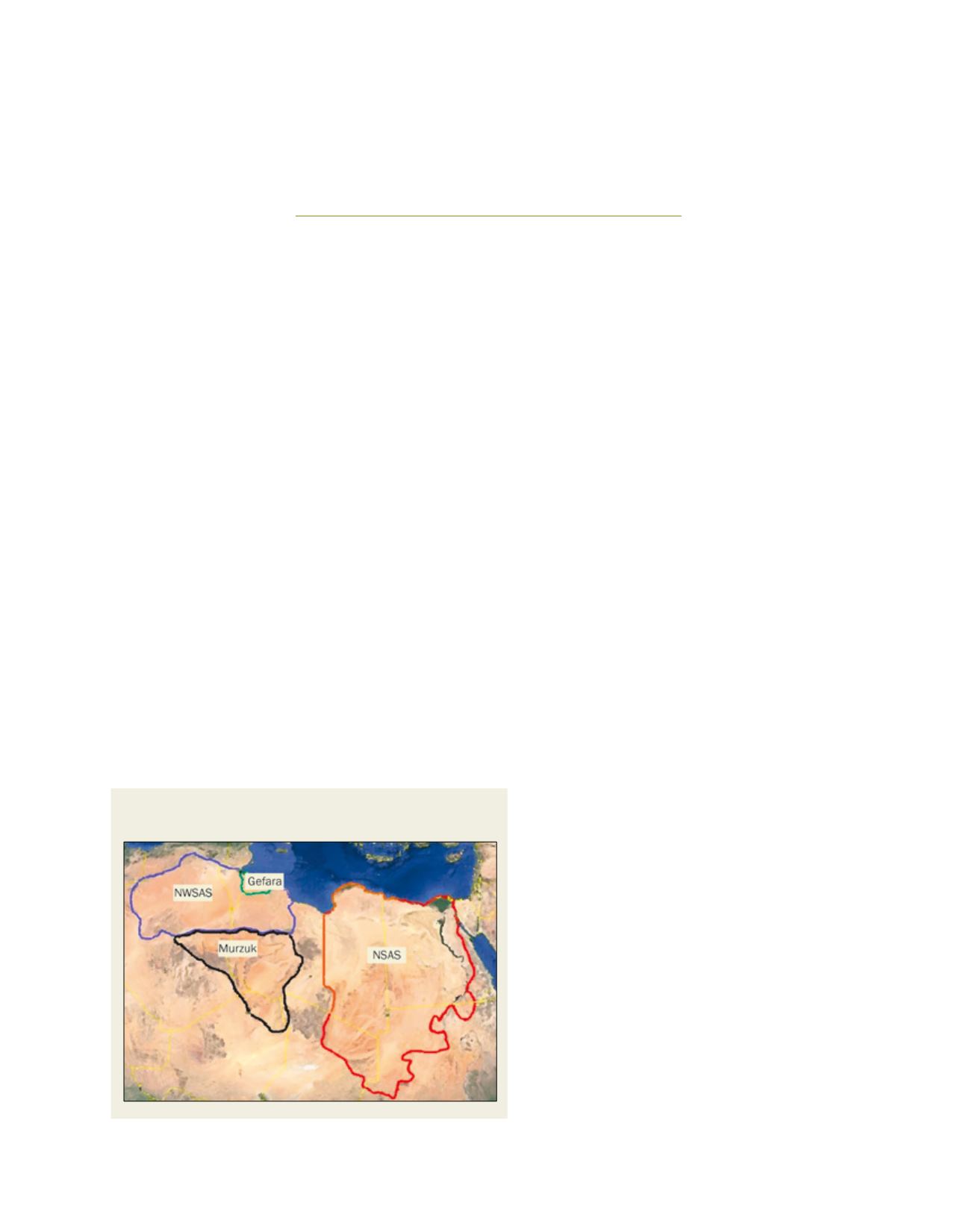

[
] 85
Libya’s experience in the management of
transboundary aquifers
Omar Salem, Senior Hydrogeologist, General Water Authority – Ministry of Water Resources, Libya
L
ibya shares several aquifer systems with neighbouring coun-
tries. The North-Western Sahara Aquifer System (NWSAS)
is shared with Algeria and Tunisia, the Nubian Sandstone
Aquifer System (NSAS) with Egypt, Sudan and Chad, the Gefara
Aquifer with Tunisia, and the Murzuk Aquifer System with Algeria
and Niger. About 85 per cent of the present water supply of Libya
originates from transboundary aquifer systems. This ratio varies in
neighbouring countries according to the prevailing local conditions.
Given their paramount importance in providing water needed for
securing national and regional economic development, and their
susceptibility to long-term adverse effects, the NSAS and NWSAS
were singled out by the riparian states for additional studies. These
would ultimately lead to coordinated joint management through
multilateral cooperation mechanisms under the auspices of special-
ized international organizations.
The NSAS includes the Palaeozoic andMesozoic aquifers in the south
and the Neogene aquifers in the north. It extends over a surface area of
more than 2.2 million km
2
in Libya, Egypt, Sudan and Chad. In Libya,
it is known as the Kufra and Sarir basins, and forms the main supply of
local water requirements for domestic and irrigation use in addition to
water supply for oil production activities and, more recently, as a source
for the Man-made River Project. Water exploitation from the NSAS is
steadily increasing in Egypt, but is still modest in Sudan and Chad.
On the other hand, the NWSAS extends over a
surface area of over 1 million km
2
in Libya, Algeria
and Tunisia. In Libya, it is known as the Hamada al
Hamra Basin and is subdivided into two sub-basins:
the Ghadames in the west and the Sawf al Jin in the
east. It terminates at the sabkha of Tawurgha along
the Mediterranean.
The NWSAS contains two main groundwater aqui-
fers: the Upper Jurassic-Lower Cretaceous sandstone,
known regionally as the Continental Intercalaire and
locally as the Kikla aquifer; and the Upper Cretaceous
limestone known regionally as the Complex Terminal
and locally as the Nalut and Mizda aquifers.
Since the early 1970s, water authorities in the
concerned countries have launched bilateral and multi-
lateral dialogues leading to mutual agreements to launch
systematic programmes for joint monitoring and assess-
ment of their transboundary groundwater resources.
These later expedited the establishment of perma-
nent joint institutions, namely the Joint Commission
for the Study and Development of the NSAS and the
Consultation Mechanism for the NWSAS.
Joint Commission for the NSAS
The Joint Commission for the NSAS was established
in Tripoli in 1989 between Libya and Egypt, and
was joined at a later stage by Sudan and Chad. It was
entrusted with the following tasks:
• collection, analysis, integration and dissemination
of data
• conducting complementary hydrogeological studies
• planning for the development of water resources
according to agreed exploitation policies at national
and regional levels
• managing the aquifer on sound scientific bases
• conducting capacity building programmes
• ensuring rational use of the NSAS water
• assessing the environmental impact of water
development
• organizing workshops and consolidating ties
with corresponding regional and international
organizations.
During the past two decades the commission, in
collaboration with international organizations, has
succeeded in implementing several projects.
T
ransboundary
W
ater
M
anagement
About 85 per cent of Libya’s water supply originates from
transboundary aquifer systems
Source: GWA Libya


















